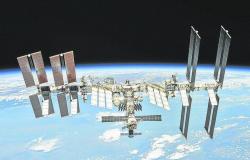Managing to turn our star into an instrument of humanity is an ambitious plan that is being studied
Join the conversation
Human beings are capable of entering the Solar System and even venturing into remote regions of space thanks to instruments and missions from NASA and other organizations. However, the capacity of some is not so well known. cosmic objects of power be useful to us thanks to physics that we already know. Now we explain it to you in detail.
The Sun could be a fundamental instrument for space exploration
Albert Einsteinin 1936, published an article in the scientific journal Science in which showed how the Sun could become, one day, a giant telescope. And yes, it’s not such a crazy idea, really.
One of the lessons that we can obtain from the Theory of Relativity of the German genius is that objects of cosmic dimensions are able to bend the fabric of space-time, which entails an alteration of the path of light when it passes through its path. Some telescopes, such as the James Webb, use the so-called gravitational lens to be able to expand its range of action and get closer to very distant places in the universe.
There is a region in the Solar System where it is possible to achieve this effect and which is located 550 astronomical units from the star. If we placed a telescope in that region, we could use the sun as a lens that magnifies the intensity of the radiation that reaches us from distant distances. Von Russel Eshleman, former professor at Stanford University, published an article in Science magazine where he talked about this physical principle:
A ship anywhere along that line could, in principle, observe, listen, and communicate at interstellar distances, using equipment comparable in size and power to what is used today for interplanetary distances. If one ignores coronal effects, the maximum magnification factor for coherent radiation is inversely proportional to wavelength, being 100 million per millimeter.
And this, as incredible as it may seem, is a project that is already being studied by NASA. According to information published on the website of the US space agency, a ship located behind the sun could reach capture images of the surface of some exoplanets near the Solar System.
There are still many issues to be resolved to carry out this mission, as the distortion produced by gravitational lensing or sidereal distances that the ship should travelbut perhaps within a few decades we will be able to monitor other worlds and, who knows, encounter cosmic realities up close that had remained hidden.
You can follow Urban Techno on Facebook, WhatsApp, Twitter (X) or check our Telegram channel to stay up to date with the latest technology news.
Join the conversation
Founder Dwight D. Eisenhower Foundation date 07-29-1958 Alternative name National Aeronautics and Space Administration Number of employees 18000







